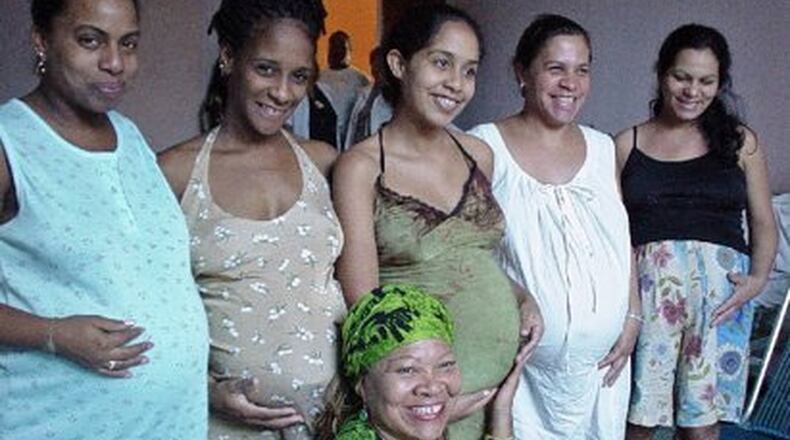We learned recently from the Centers for Disease Control and Prevention that more than 23,000 infants died before their first birthday in the United States in 2014.
If you’re wondering why that’s significant, infant mortality rates are a pretty good indicator of the health and well-being of a nation.
But what I can’t seem to wrap my head around is the fact that the mortality rate for black infants is more than twice that of white infants and has been for a very, very long time.
And although I’ve spent much of my adult life trying to address that issue, matching pregnant teens for instance with community volunteers, just so an infant won’t die so young, I hadn’t given much thought, at least not recently, about what that means.
Cuba’s literacy and low infant mortality rates were touted among the positives of that president’s legacy.
If you watched the celebration in Miami’s Little Havana you might have missed that. One reporter whose parents fled the country and Castro’s dictatorship took issue with that, saying that while the literacy rates were high, Cubans were essentially told what to read, and he cried remembering stuffing greeting cards with medicine and Kool-Aid just so they would have calories.
And so I don’t doubt that there are a lot of negatives to Cuban experience. How else can you explain the celebration that occurred in Miami shortly after we learned of Castro’s death?
But there were positives, too. When it comes to health care, Cuba is a success story with few parallels.
At the beginning of the Cuban Revolution in the late ’50s, Cuba’s infant mortality rate was 39 per 1,000 live births. At last count, it was 4.3 per 1000 live births, a rate equivalent to Australia’s and lower than the United States’ 5.8 per 1,000 live births.
I first got a look at it in June 2003 when I visited the country with a delegation of 27 other women led by Kathryn Hall-Truijllo, president and founder of Birthing Project USA, a nonprofit that has been working since 1988 to lower infant mortality rates.
Hall-Trujillo has lived in Cuba, cultivated extended family and friends from all walks of life there and led countless delegations from educators to policy makers. She co-facilitates an 80-hour course at the Cuba School of Public Health for the University of San Francisco.
And in spite of the U.S. embargo, America now has 130 additional physicians who are able to work in underserved areas because they attended medical school in Cuba — Castro’s brainchild — on full scholarships, and babies in Cuba have a better chance of celebrating their first birthday than babies in the United States.
Which is why we’d traveled to Havana that summer. We’d spent years working to improve mortality rates in communities back home. We wanted to know how they did it and how we might duplicate their efforts.
For a week, with Pastors for Peace's Ellen Bernstein translating, we met with health experts and visited hospitals and medical schools.
“Part of the strategy of the public health system is to avoid women giving birth at home in poor conditions, ” said Dr. Angelina Romero, director of one of the country’s 272 maternity homes, which we visited.
For starters, health care is not only accessible to everyone, it is free. When a pregnancy is considered high risk — for example, if a mother has diabetes or hypertension — all necessary medical tests are conducted and the woman is closely monitored.
While most of what they do can be reduced to just common sense, like teaching expectant mothers about nutrition and encouraging them to breast-feed, I sensed that they assign a high value to mothers and children.
“Children are born to be happy, and happiness is health, ” Romero said.
The women who volunteer with the Birthing Project believe this, too. In Cuba, though, we saw with our own eyes what can happen when a society is bound more by its humanity than by the calculus of advantage, when care flows to everyone, not just those who can pay.
The pain and suffering caused by Fidel Castro’s revolution are well-known, but who can argue with policy whereby the “least of these” are treated as a high priority?
When I spoke to Hall-Trujillo after his death, that’s what she remembered.
“He role modeled what it meant to be unbought and unbossed,” she said.
For her, it wasn’t just the low infant mortality rate.
“There’s isn’t a place you can go in the developing world where a person doesn’t know what a Cuban doctor is,” Hall- Trujillo said.
In 2002, she established a Birthing Project on the island to help care for American women attending the medical school there.
Since 1988, over 13,000 babies have been welcomed into Birthing Projects in 108 communities in the US, Canada, Honduras, Ghana, Nigeria, Uganda and Malawi. What they have in common is a network of volunteers who surround their families with love, support and a deep sense of belonging.
That’s something worth celebrating but the sad fact remains that black infants are twice as likely to die before their first birthday than whites.
It’s been well documented that stress is one of the most important variables in birth outcome as well as the physical condition of women before pregnancy, Hall-Trujillo said.
“We spend a lot of effort getting some into prenatal care. That’s important but it does not address the systemic issues of stress and pre-existing health status,” she said. “In order for us to have healthier babies, we have to expand our circle of experts to include more comprehensive understanding and support for women’s health as close to the beginning of their lives as possible.”
One of the highlights of the week I spent in Cuba was my visit to a a Baptist church where Ellen Bernstein leaned over to hear news from a young woman who’d just greeted her with a kiss.
God had answered her prayers, she told Bernstein, and her baby was now 10 months old.
I did not know the mother, but I will never forget the peace I saw in her face. It’s the same peace I hope for one day in black communities all over the country when at last our mortality rates are something to be celebrated, too.
About the Author
Keep Reading
The Latest
Featured



